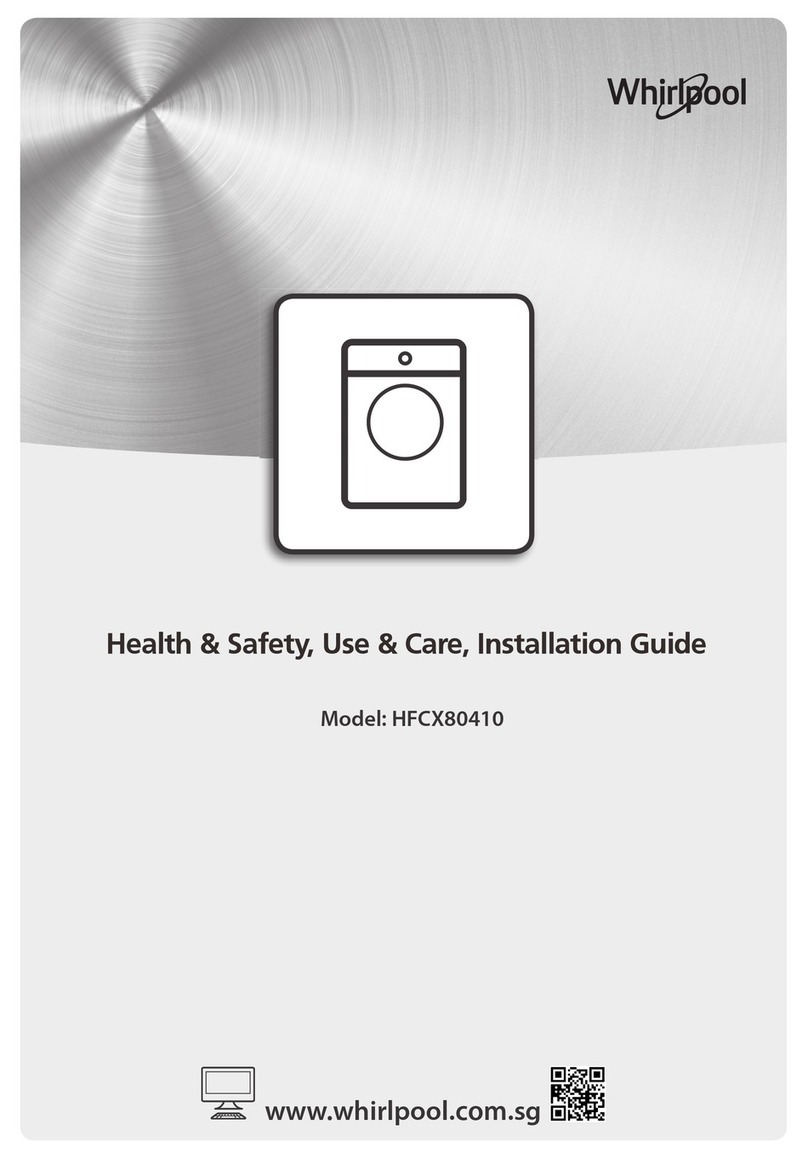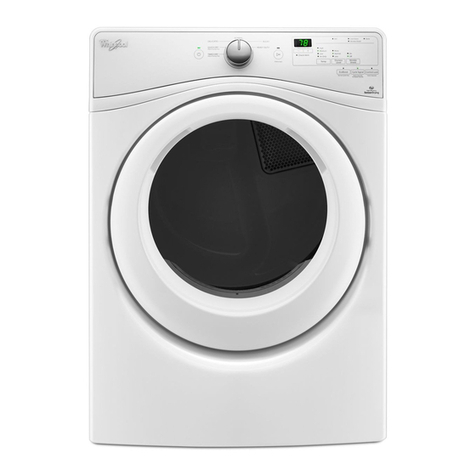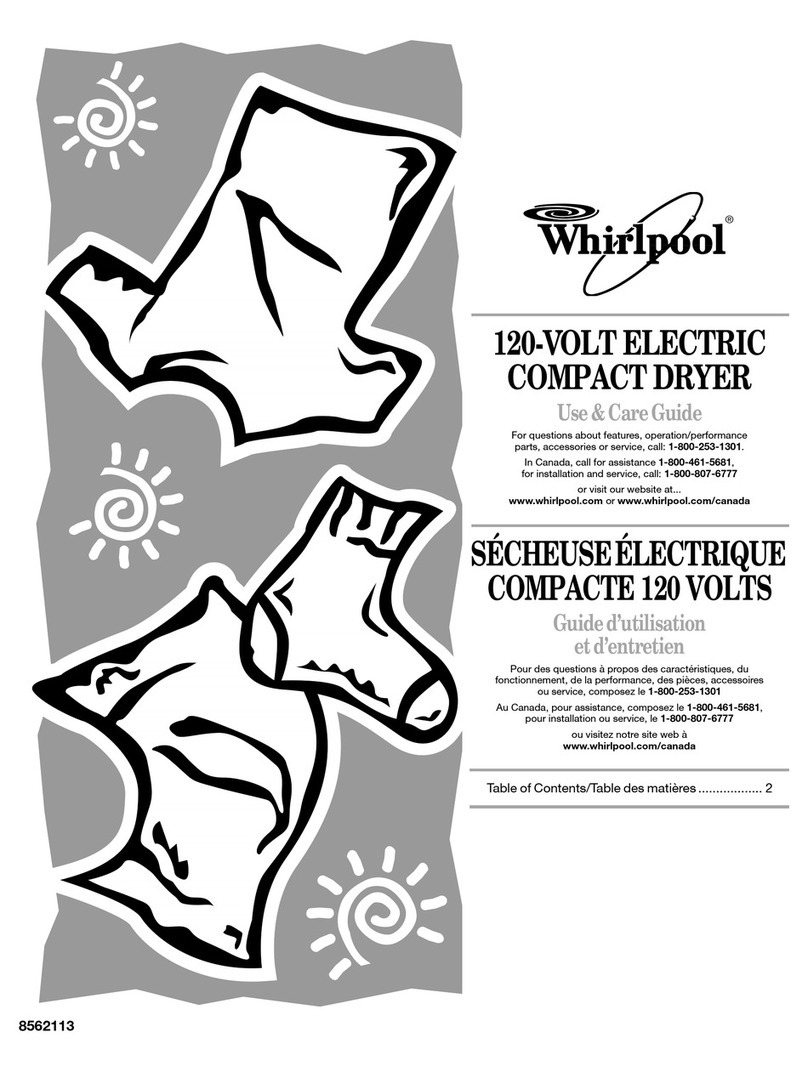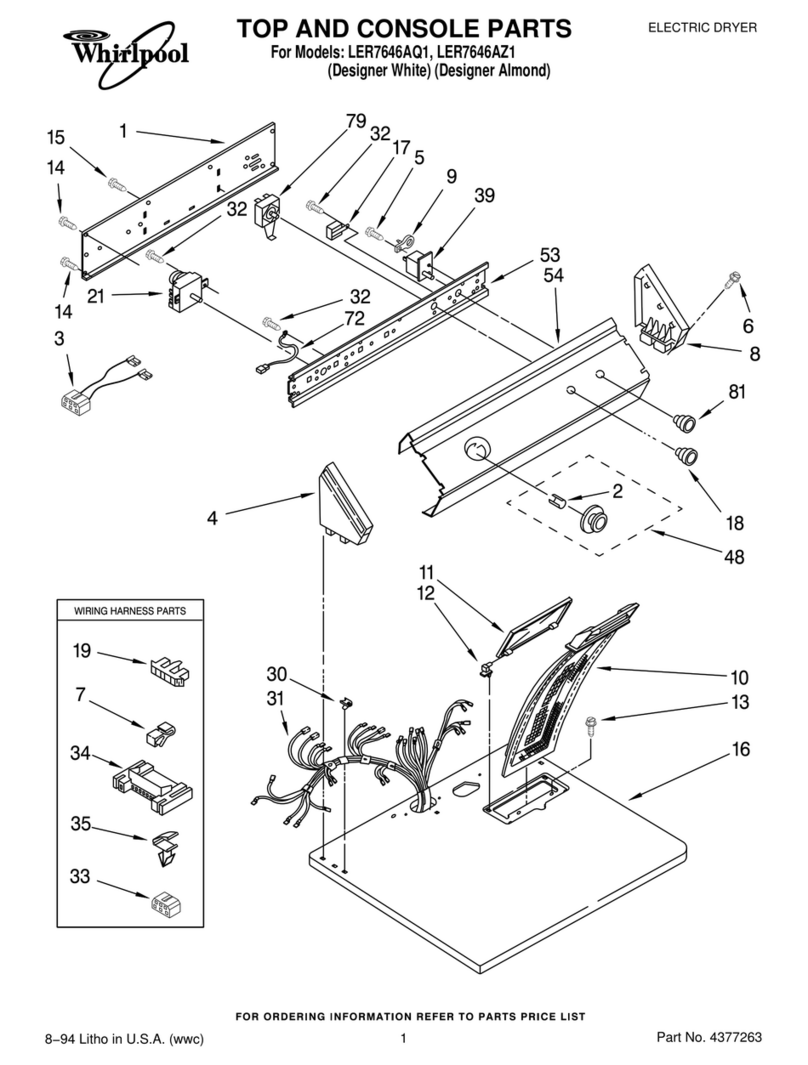Whirlpool ELECTRIC DRYER User manual
Other Whirlpool Dryer manuals
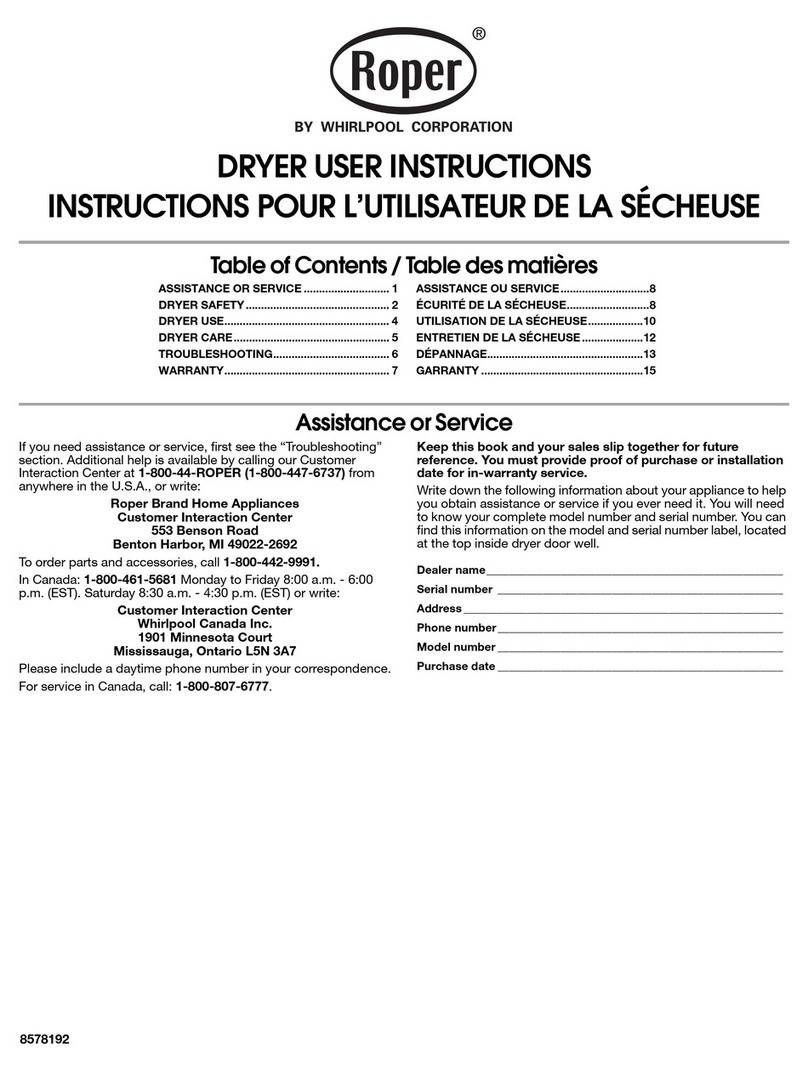
Whirlpool
Whirlpool Roper REX3514RQ1 User manual
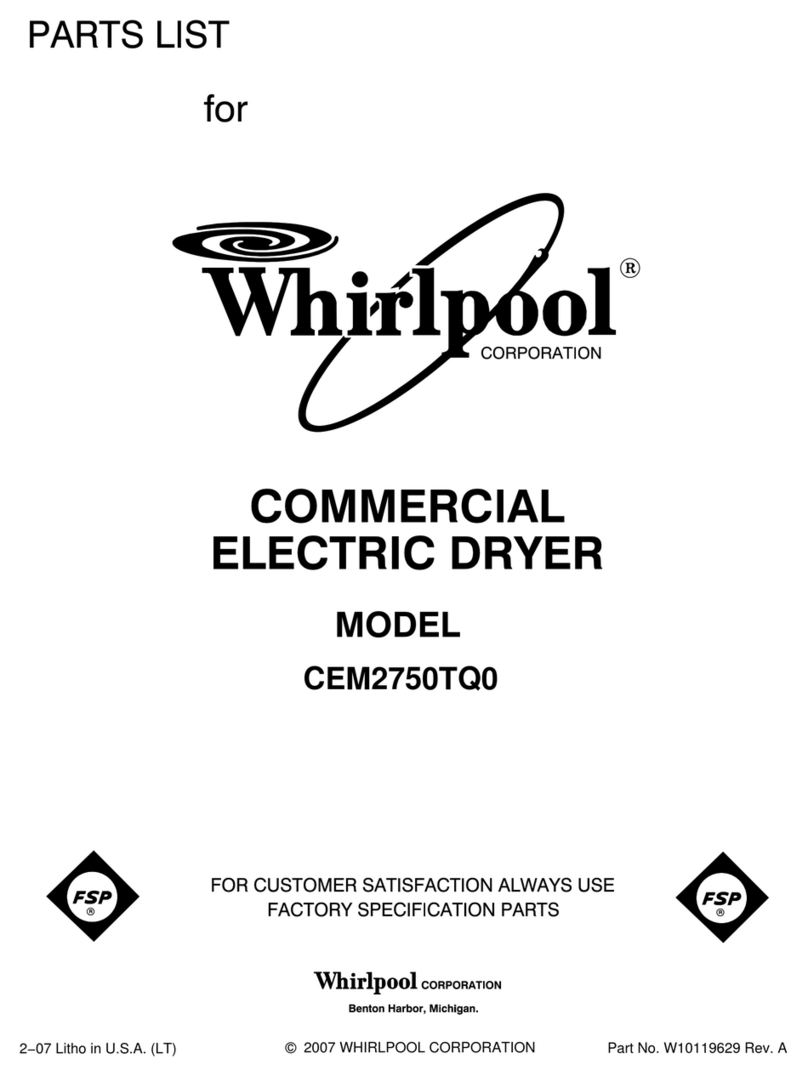
Whirlpool
Whirlpool CEM2750TQ0 User manual
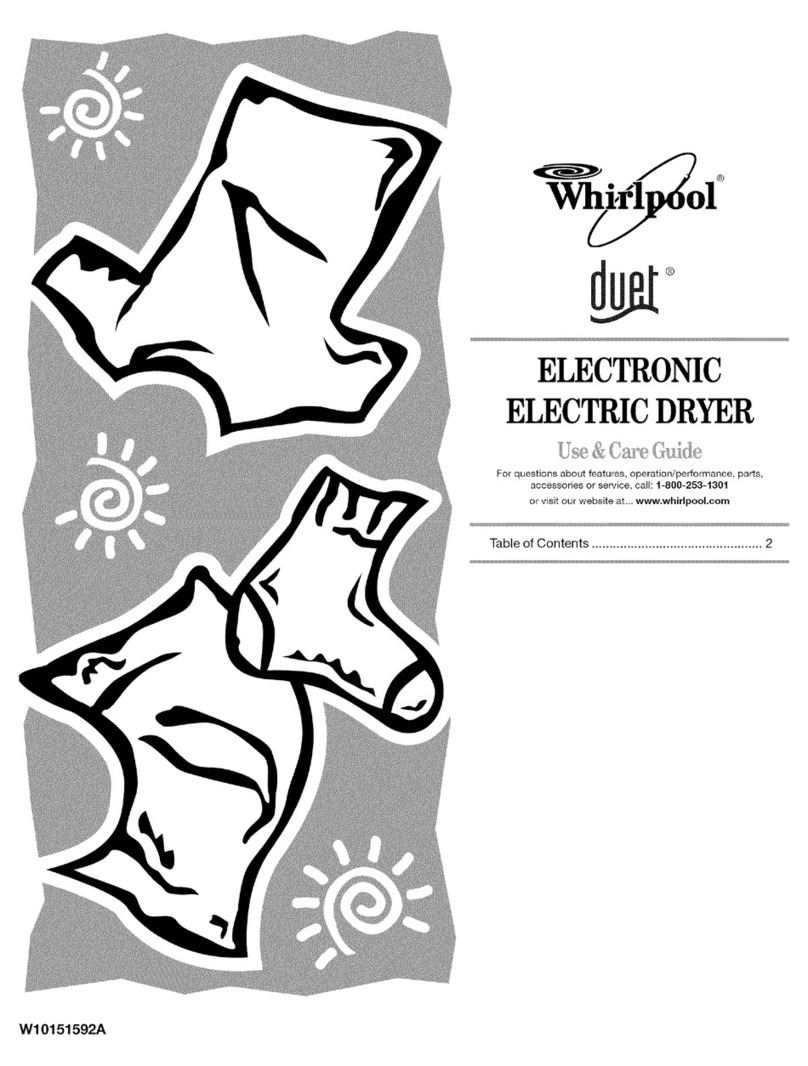
Whirlpool
Whirlpool Duet WED9200S User manual
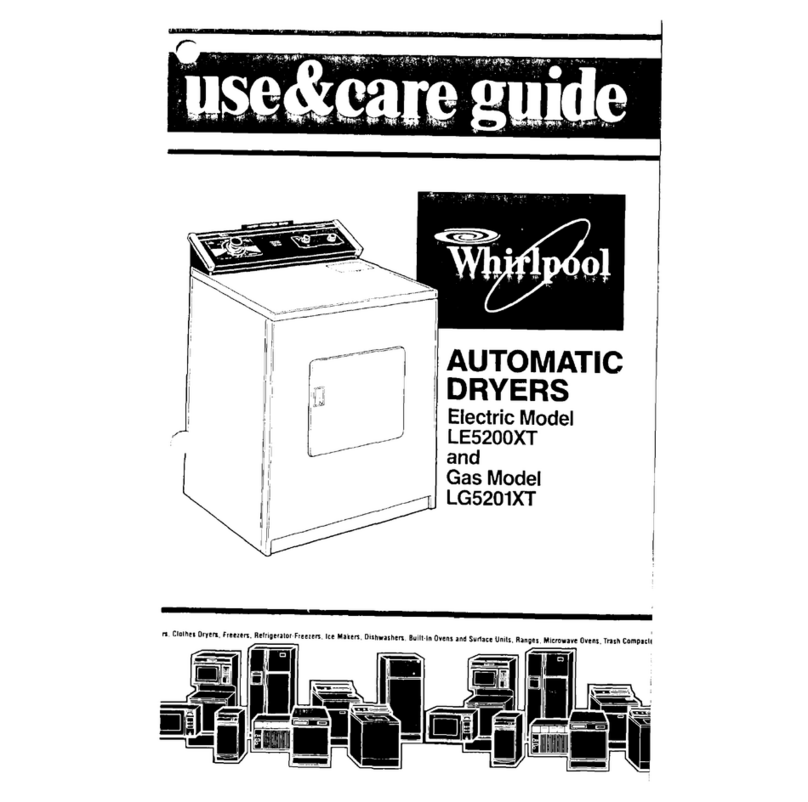
Whirlpool
Whirlpool LE5200XT User manual

Whirlpool
Whirlpool LG5701XS User manual
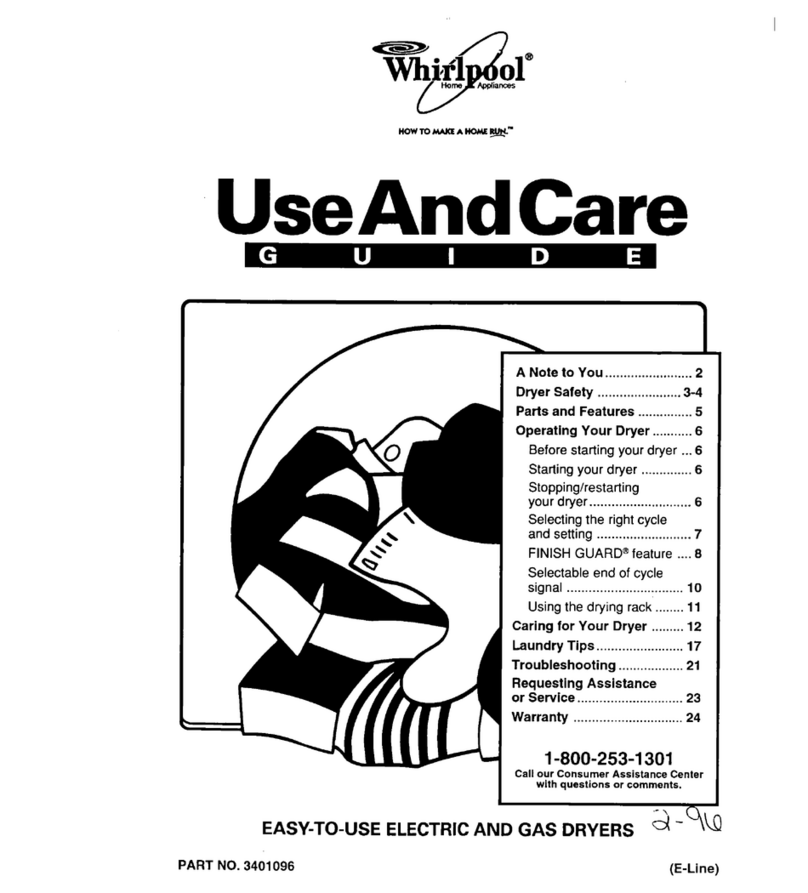
Whirlpool
Whirlpool LER5848DQ0 User manual
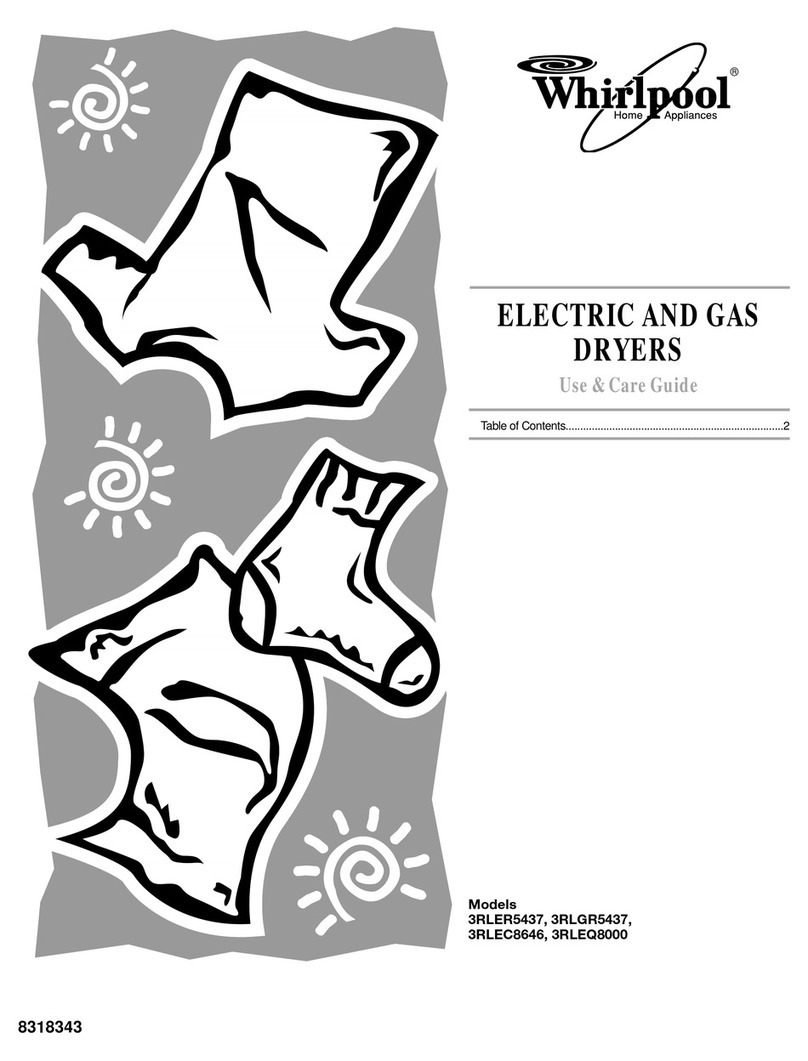
Whirlpool
Whirlpool 3RLER5437 User manual

Whirlpool
Whirlpool Atlantis 3LWED4815FW User manual
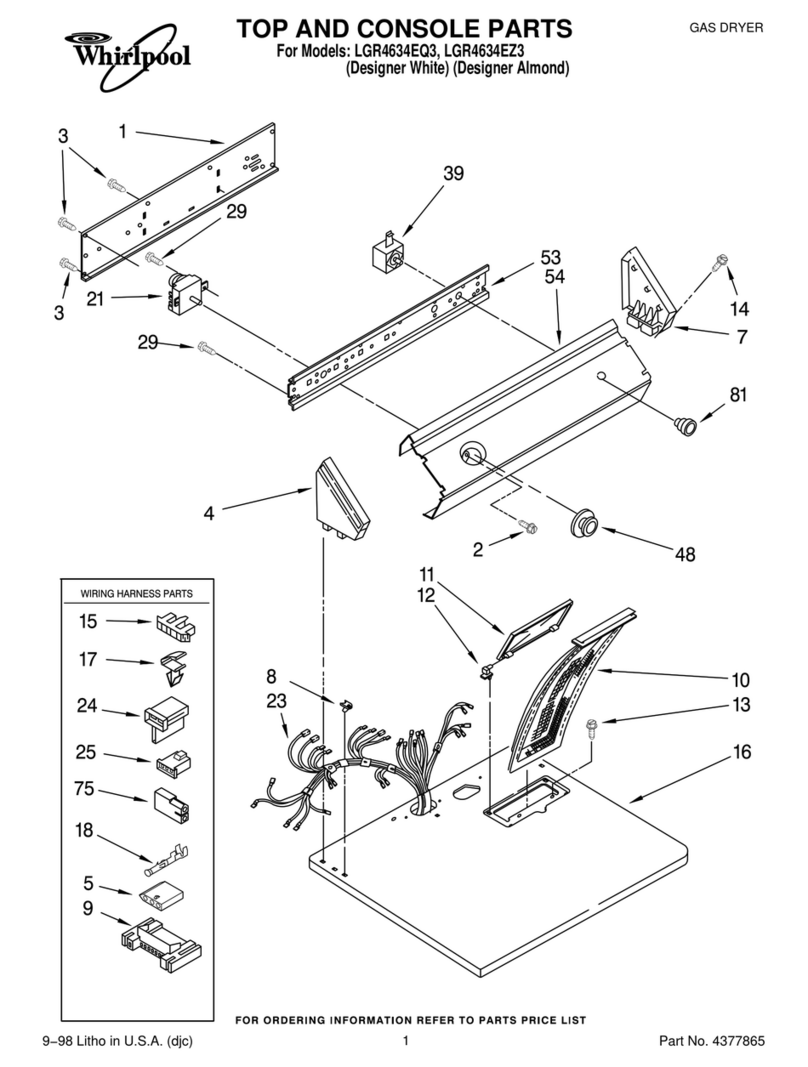
Whirlpool
Whirlpool LGR4634EQ3 User manual

Whirlpool
Whirlpool LE5530XP User manual
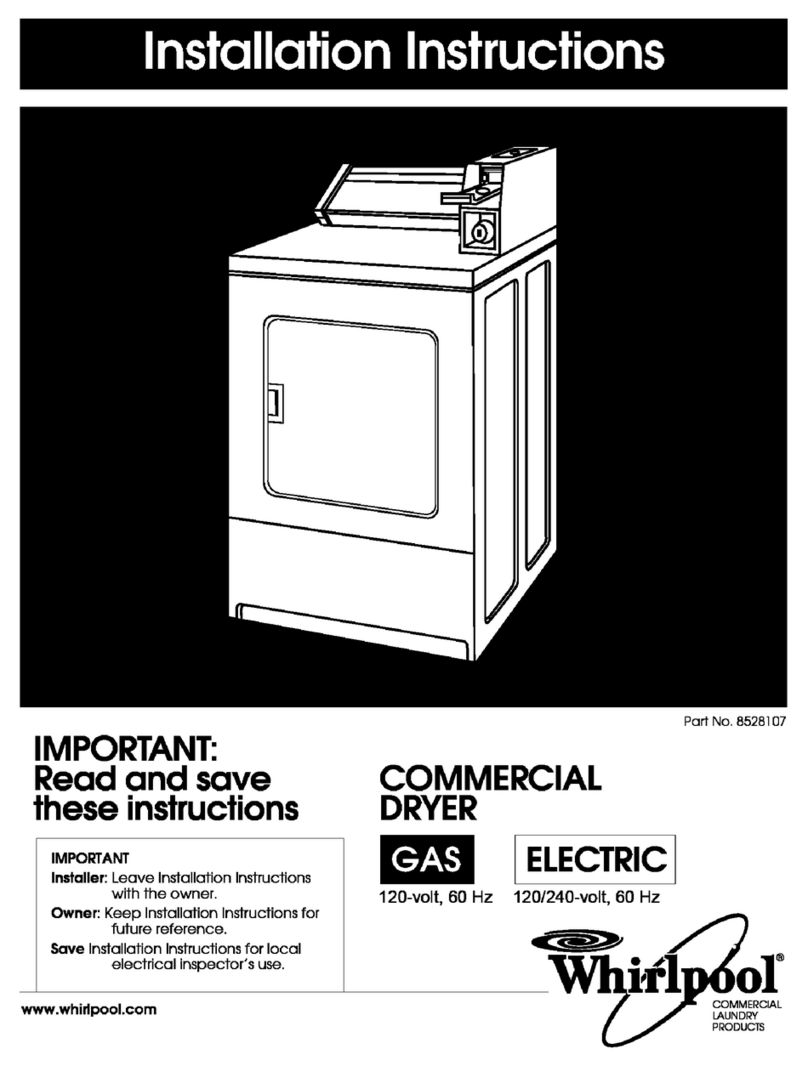
Whirlpool
Whirlpool YCEP2760KQ0 User manual
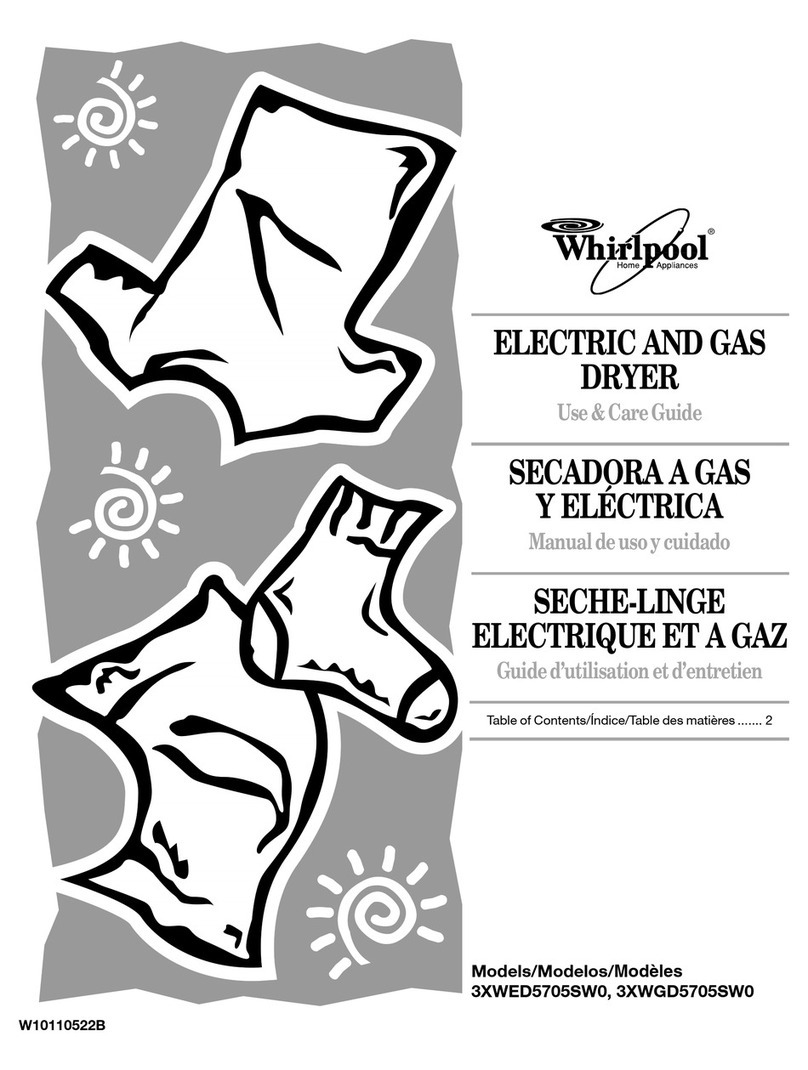
Whirlpool
Whirlpool 3XWED5705SW0 User manual
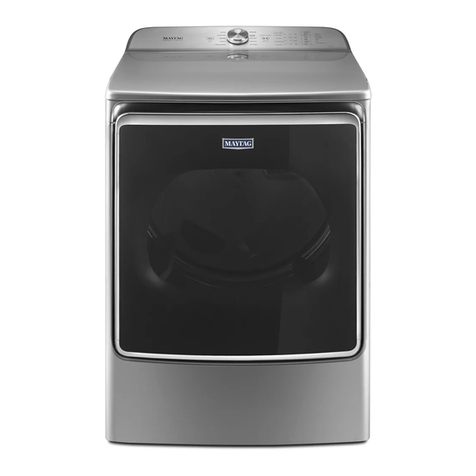
Whirlpool
Whirlpool WED9500E SERIES User manual
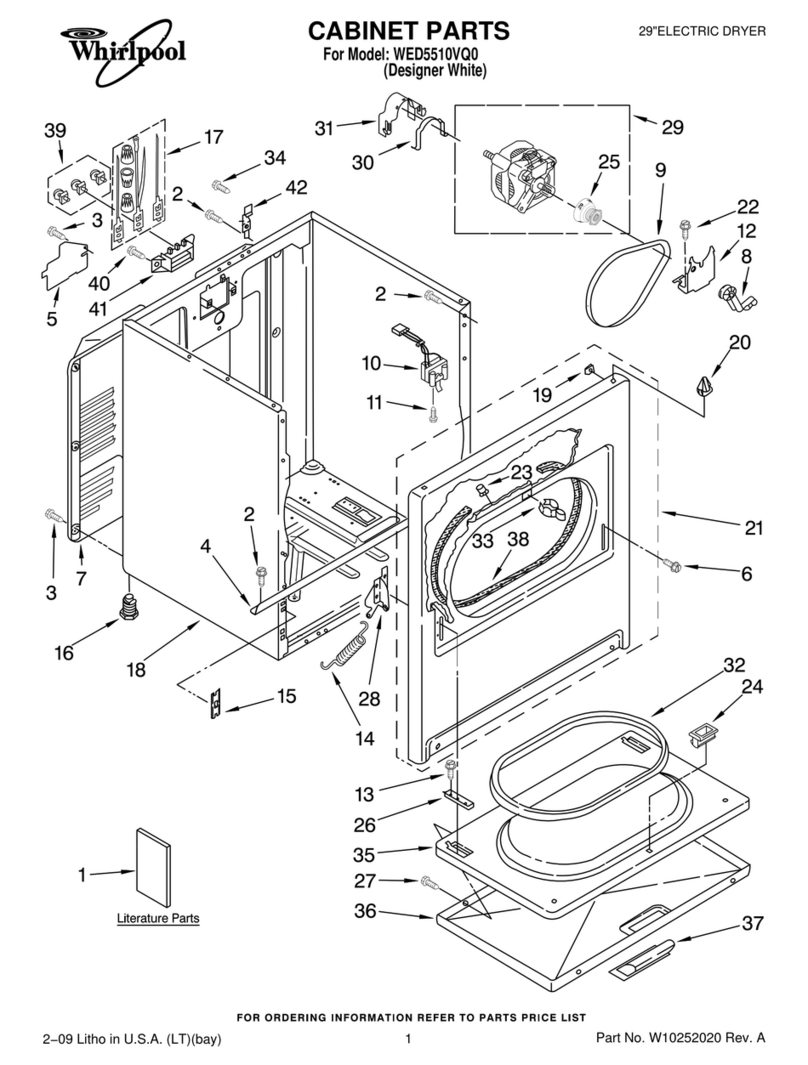
Whirlpool
Whirlpool WED5510VQ User manual
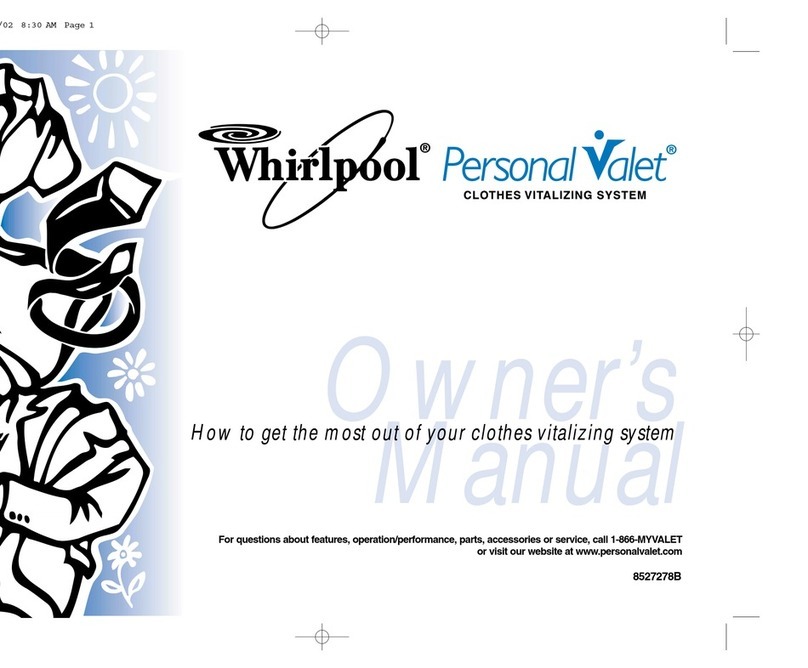
Whirlpool
Whirlpool Personal Valet PVBM600LY0 User manual

Whirlpool
Whirlpool Commercial Dryer User manual
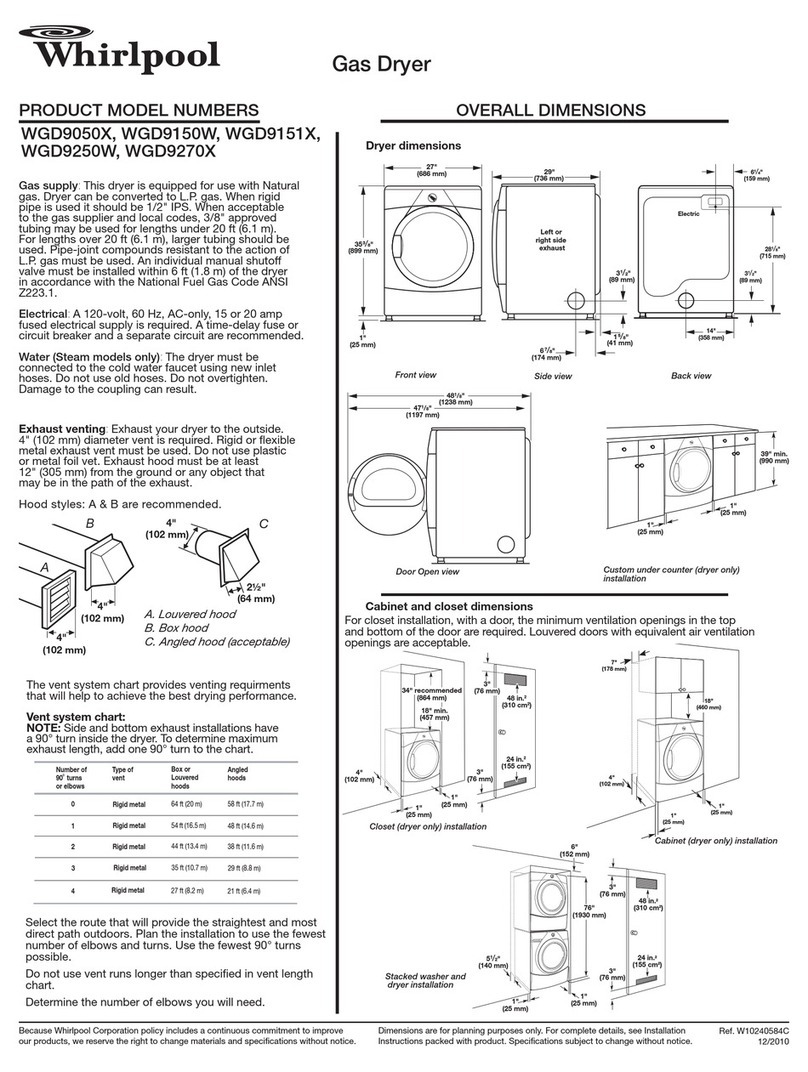
Whirlpool
Whirlpool WGD9050X Parts list manual
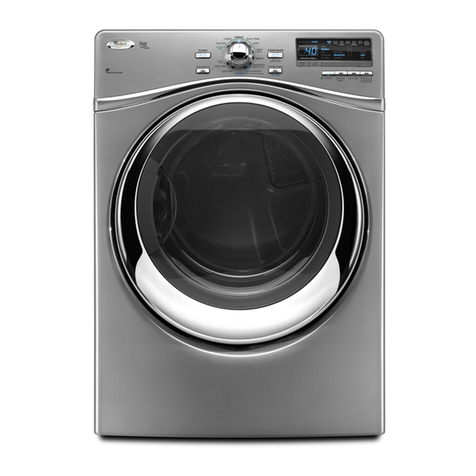
Whirlpool
Whirlpool W10305730B User manual
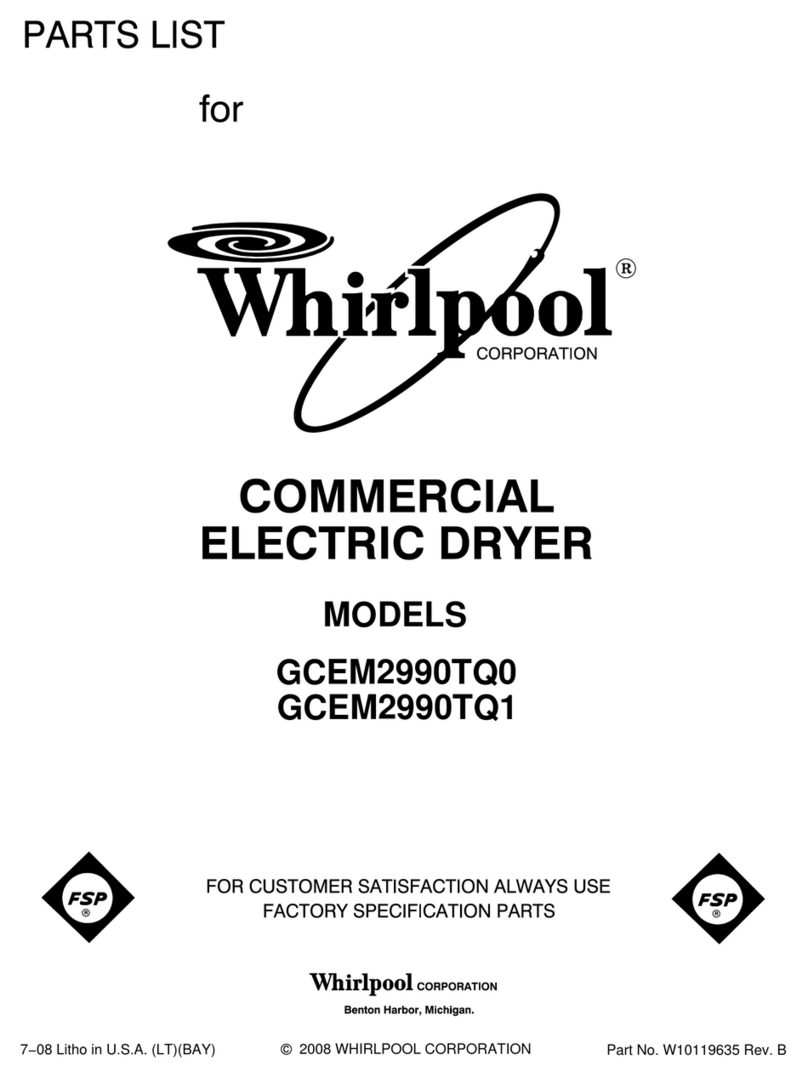
Whirlpool
Whirlpool GCEM2990TQ0 User manual
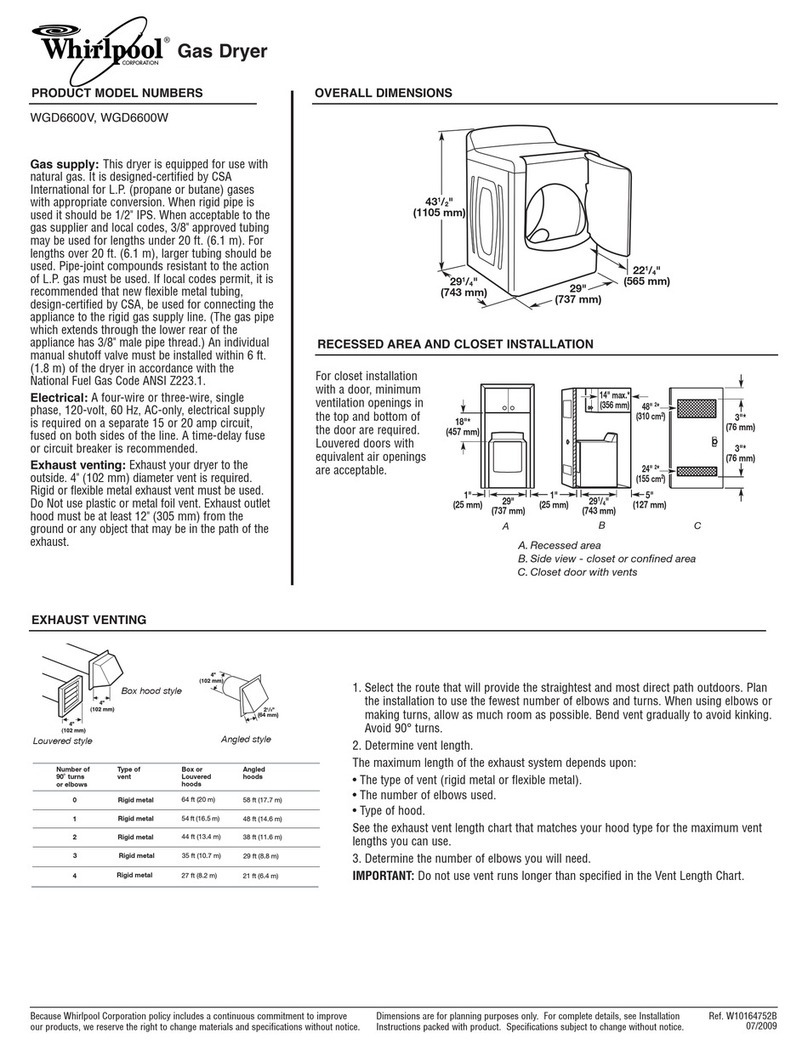
Whirlpool
Whirlpool Cabrio WGD6600V Manual
Popular Dryer manuals by other brands

KitchenAid
KitchenAid 53-3498 installation instructions

Schulthess
Schulthess Spirit topLine TW 8340 operating instructions

World Dryer
World Dryer AirMax D M5-972A manual

Alliance Laundry Systems
Alliance Laundry Systems ADEE9BSS user guide

Miele
Miele PDR 910 EL Operating and installation instructions

Amana
Amana NGD5800TQ0 parts list
